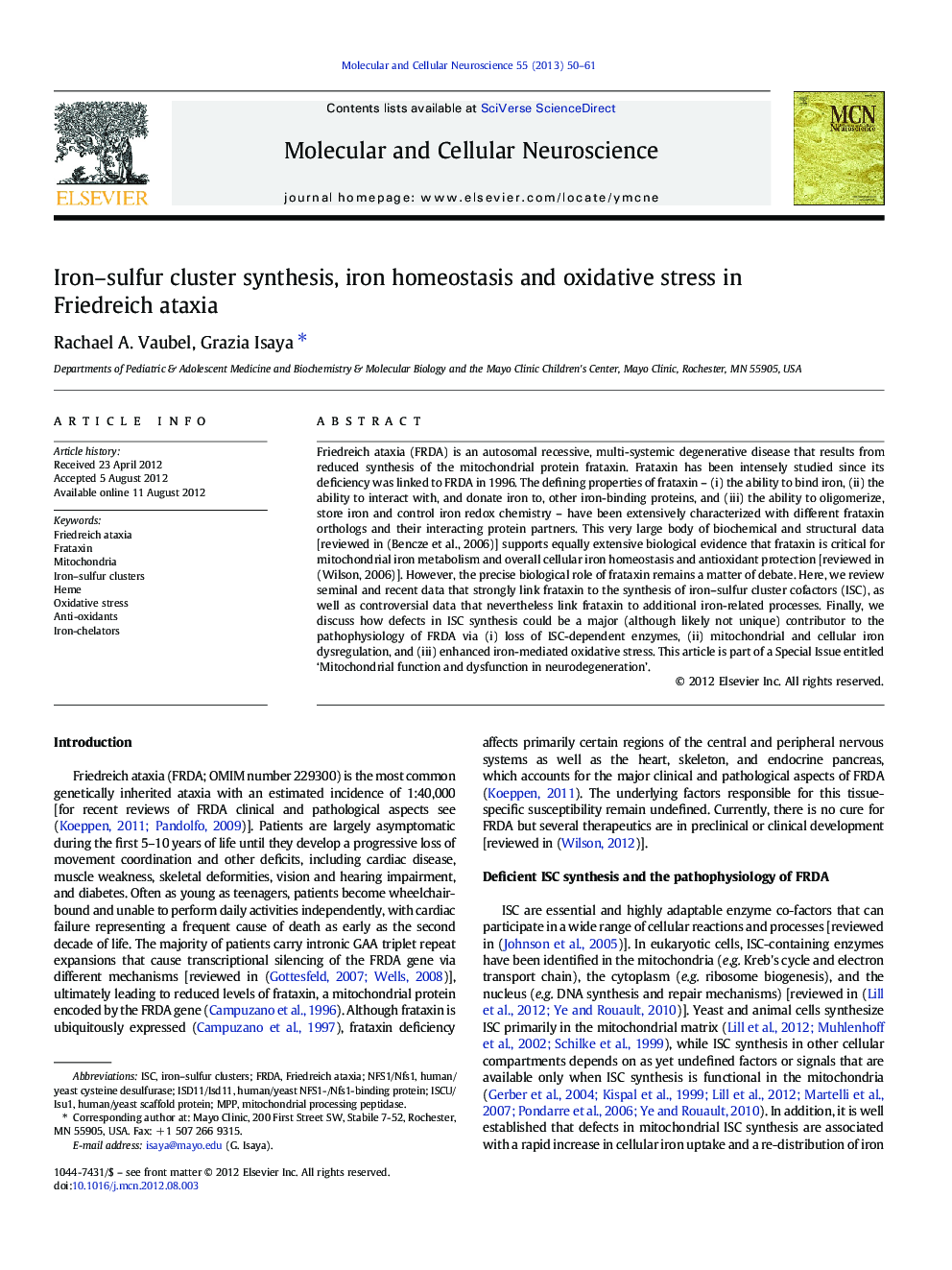| Article ID | Journal | Published Year | Pages | File Type |
|---|---|---|---|---|
| 8478695 | Molecular and Cellular Neuroscience | 2013 | 12 Pages |
Abstract
Friedreich ataxia (FRDA) is an autosomal recessive, multi-systemic degenerative disease that results from reduced synthesis of the mitochondrial protein frataxin. Frataxin has been intensely studied since its deficiency was linked to FRDA in 1996. The defining properties of frataxin - (i) the ability to bind iron, (ii) the ability to interact with, and donate iron to, other iron-binding proteins, and (iii) the ability to oligomerize, store iron and control iron redox chemistry - have been extensively characterized with different frataxin orthologs and their interacting protein partners. This very large body of biochemical and structural data [reviewed in (Bencze et al., 2006)] supports equally extensive biological evidence that frataxin is critical for mitochondrial iron metabolism and overall cellular iron homeostasis and antioxidant protection [reviewed in (Wilson, 2006)]. However, the precise biological role of frataxin remains a matter of debate. Here, we review seminal and recent data that strongly link frataxin to the synthesis of iron-sulfur cluster cofactors (ISC), as well as controversial data that nevertheless link frataxin to additional iron-related processes. Finally, we discuss how defects in ISC synthesis could be a major (although likely not unique) contributor to the pathophysiology of FRDA via (i) loss of ISC-dependent enzymes, (ii) mitochondrial and cellular iron dysregulation, and (iii) enhanced iron-mediated oxidative stress. This article is part of a Special Issue entitled 'Mitochondrial function and dysfunction in neurodegeneration'.
Keywords
Related Topics
Life Sciences
Biochemistry, Genetics and Molecular Biology
Cell Biology
Authors
Rachael A. Vaubel, Grazia Isaya,
